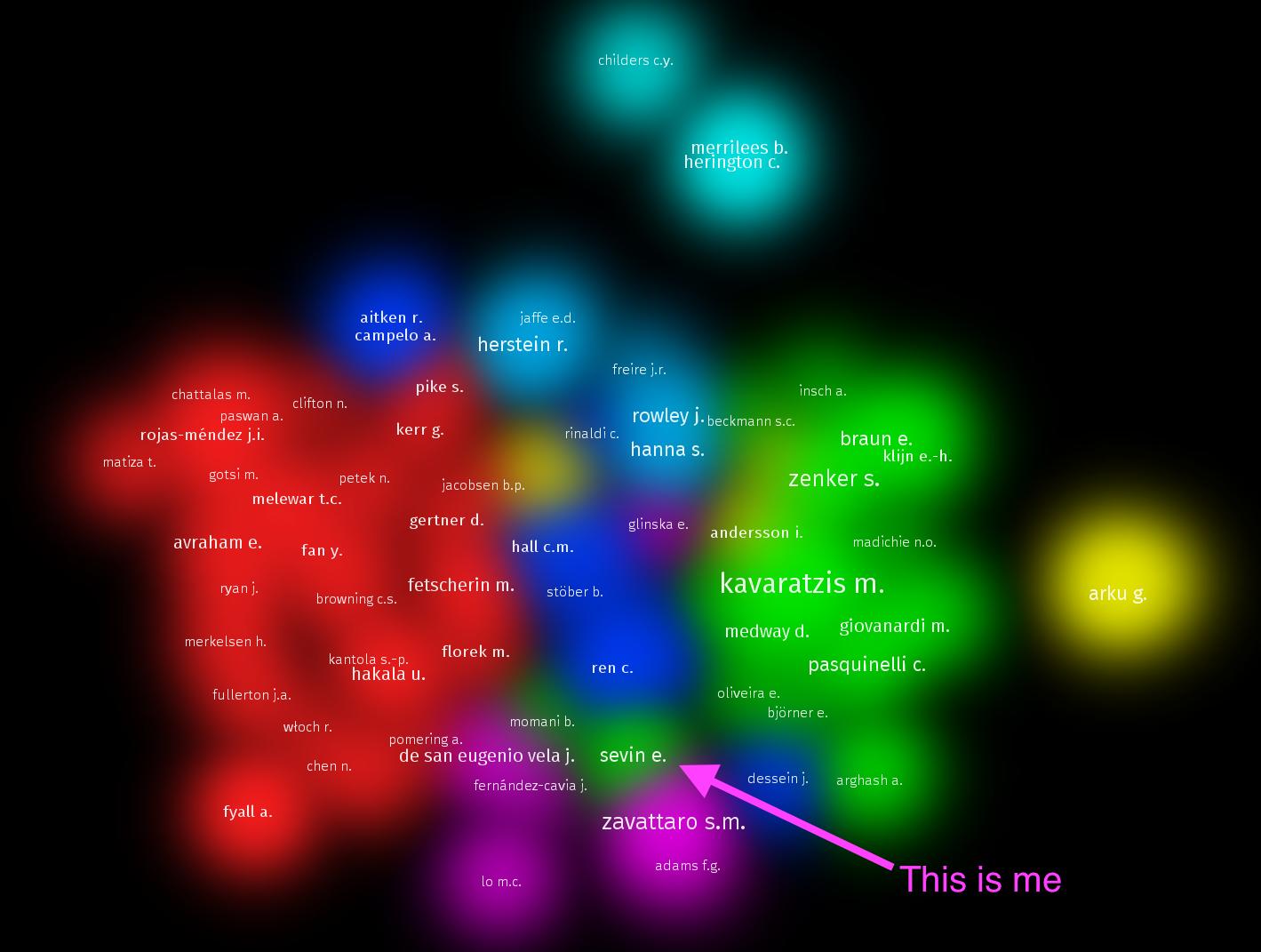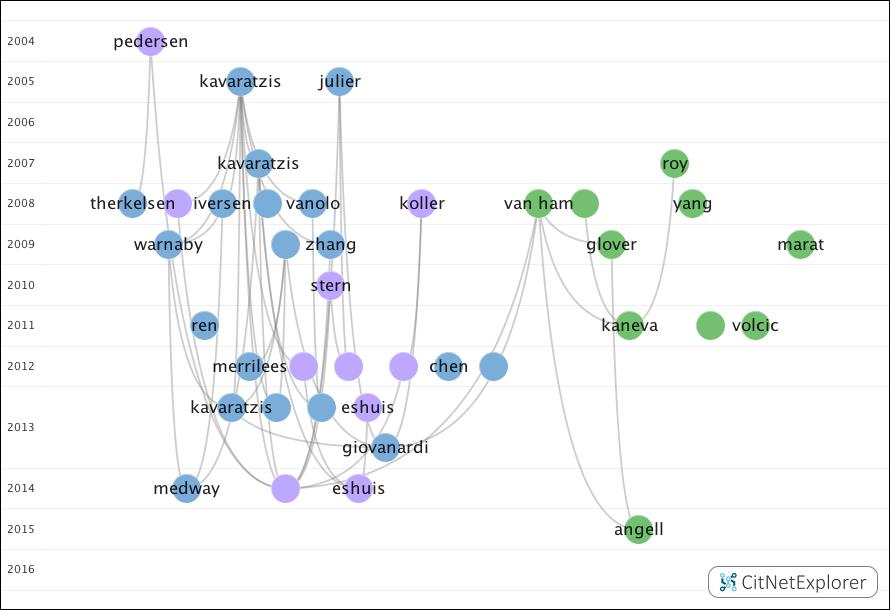In my never-ending quest to understand and explain the “place” of “place branding” in academia, this month I am taking a more “meta” approach to the field. Before I start, please let me note that there are already a couple of meta-review articles on place branding that can be found here, here, here, and here. For a young discipline, we have been quite good at generating meta literature reviews.
Yet, the existing research focuses on theoretical similarities and/or methodological approaches to place branding. For instance, is place branding a consumption issue or a production? Or should we study it from a marketing perspective or an urban planning one?
In this post, I ask a more structural issue. Who do we cite? Which are some of the more important works? Are there any groupings based on co-citation similarities? For this purpose, I went to the Web of Science database[1] and downloaded bibliographic information on all articles that had “place branding”, “city branding”, “country branding” or “nation branding” as their topic. If anybody is interested in the dataset, please contact me via Twitter. I’d be more than happy to publicly share it.
I ended up with 303 publications that had a total of 308 unique citations. Using CitNetExplorer,[2] I carried out a preliminary analysis of citation networks. The nodes (circles) represent individual works, and the colors represent clustering. The works that are the same color cite each other more often than the rest. The vertical axis shows the year of publication. I would like to highlight five observations before I move on to the next analysis:
- The “blue” grouping tends to include the articles that establish the theoretical background, “purple” includes the ones that discuss policy implications, while “green” is the more-or-less critical/political approaches to the issue.
- Despite our love and appreciation of Simon Anholt and his works, he does not show up in this particular dataset. His publications – as well as those of practitioners – are not listed in WoS. The network portrays the academic relations.
- The theoretical foundation of the field is laid out by Kavaratzis and Ashworth.
- Articles start to be cited around two years after their publication. I would consider two-years to be almost “fast” for a new research project to get published. Therefore, I am going to go ahead and argue there is no citation lag. Scholars keep themselves up-to-date and cite new articles.
- Nobody cites me. Not cool guys… Not cool.
For the next analysis, I changed the dataset.[3] I used the same keywords and compiled a list of 484 articles, written by 693 different authors. I looked at the bibliographic couplings to determine group similarities. In other words, the authors are grouped together if they cite the same group of authors. I removed the authors that had only one publication, leaving the dataset with 110 authors. I created the visualization on VOSviewer.
The structure in this particular network shows both a methodological and a disciplinary approach. The groups in red and green tend to position place branding as a separate discipline, with red using critical approaches and green getting closer to more positivist approaches. The remaining groups contribute to the field from other disciplines, such as the lighter blue’s destination management expertise.
So what?
So, what do these visualizations and observations mean? From where I stand, they are “good” findings. There are natural groupings of scholars based on the methods and theories they use. These groups, hopefully, will evolve into more easily identifiable “schools of thoughts” in the near future.
The biggest obstacle that I can see is the lack of canonical work in the field. With the exceptions of Simon Anholt, Mihalis Kavaratzis, and Gregory Ashworth, there are no identifiable “big works” or “names” in place branding.
Simon Anholt’s practice and practice-based writings are useful, yet they do not have the theoretical underpinnings to be a school of thought (and he has since “rebranded” himself and changed his focus), whereas Mihalis Kavaratzis and Gregory Ashworth both represent the same view. If the other approaches can also achieve a similar level of productivity and introduce works that summarize their main assumptions, the academic discussions will be more fruitful in the near future.
[1] Web of Science (WoS) is not necessarily an exhaustive database. There are several journals, that are not indexed in WoS. Yet, we all strive to publish in WoS journals as they are deemed more reputable by academic institutions. This is why I was okay with limiting the analysis to WoS results. Plus, the software I used for analysis makes it very easy to analyze WoS data.
[2] The software shows a visualization of 40 most-cited articles.
[3] To increase the number of observations, I moved to Scopus database instead of WoS. Plus, I wanted to see my name in at least one of the maps!
 About the author
About the author
Efe Sevin is a faculty member at the Department of Public Relations and Information of Kadir Has University, Istanbul, Turkey. His current research focuses on the role of public diplomacy and nation branding on achieving foreign policy objectives. In his role as Academic Observer, Efe shares his thoughts on place branding as academic discipline.



